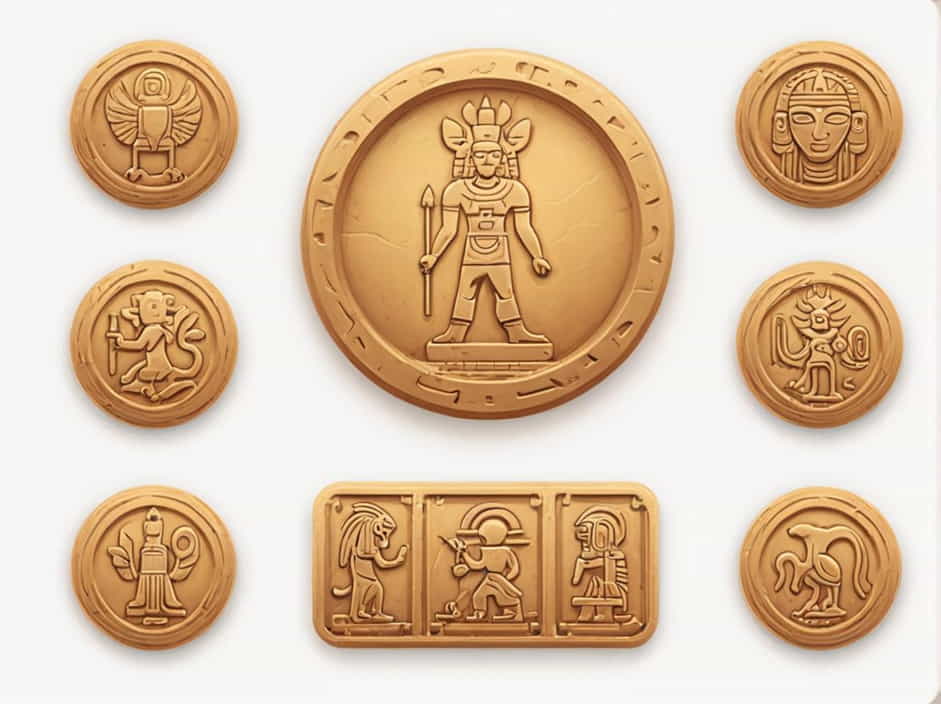The Zapotec civilization, one of the earliest and most influential cultures in Mesoamerica, developed a unique system of hieroglyphic writing over 2,500 years ago. These symbols played a crucial role in recording history, documenting religious beliefs, tracking political events, and facilitating trade.
Unlike the more well-known Mayan and Aztec writing systems, the Zapotec hieroglyphs are not as extensively studied. However, archaeological findings suggest that their writing was one of the earliest forms of recorded language in Mesoamerica. This topic explores why the Zapotecs used hieroglyphics, how they developed their writing system, and what impact it had on their civilization.
Origins of Zapotec Hieroglyphics
The Zapotec script is believed to have originated around 500 BCE in the Oaxaca region of Mexico, particularly in their capital, Monte Albán. This writing system consisted of symbols, pictographs, and phonetic elements carved into stone monuments, pottery, and codices.
The Zapotecs used glyphs to represent names, dates, places, and events. Some scholars suggest that their system might have influenced the later Mayan writing and even the Mixtec codices.
What Did the Zapotec Civilization Use Hieroglyphics For?
The hieroglyphic writing system of the Zapotec civilization served multiple purposes, from political record-keeping to religious documentation. Here are the main areas where Zapotecs used hieroglyphs:
1. Recording Political and Royal History
The Zapotecs used hieroglyphs to document the rule of kings, royal lineages, and conquests. Many inscriptions found in Monte Albán describe:
- The names of rulers and their achievements
- Military victories and territorial expansions
- Political alliances with neighboring city-states
These records were important for legitimizing the power of rulers and preserving the history of the Zapotec elite.
2. Religious Texts and Rituals
Religion played a central role in Zapotec society, and hieroglyphics were used to record:
- Mythological stories and deities
- Calendar dates for religious ceremonies
- Ritual instructions for priests and shamans
Many glyphs have been found on temple walls, altars, and sacred objects, illustrating ceremonial practices and divine messages.
3. Calendar and Astronomical Records
Like the Maya, the Zapotecs had a sophisticated calendar system that combined:
- A 260-day ritual calendar (used for divination and religious events)
- A 365-day solar calendar (used for agriculture and civic planning)
Hieroglyphics helped record and track important dates, seasonal changes, and astronomical events, which were crucial for farming, ceremonies, and governance.
4. Trade and Economic Transactions
As a major trading civilization, the Zapotecs used hieroglyphs to record economic exchanges. They documented:
- Tributes paid by conquered regions
- Lists of goods traded, such as maize, cacao, textiles, and pottery
- Weights and measures for commerce
These records helped ensure fair trade and taxation, strengthening their economy.
5. Funerary and Ancestral Inscriptions
Zapotec tombs often contained hieroglyphic inscriptions detailing:
- The identity of the deceased
- Their social status and lineage
- Rituals performed for the afterlife
These texts were carved into stone slabs and burial urns, highlighting the importance of ancestor worship in Zapotec culture.
How Did the Zapotecs Write Their Hieroglyphs?
1. Carvings on Stone Monuments
Many Zapotec glyphs have been found on stelae (upright stone slabs) and temple walls at Monte Albán. These inscriptions often depicted rulers, warriors, and religious figures.
2. Painted Codices
The Zapotecs created codices (folding books made of bark or animal skin), where they recorded historical events, rituals, and calendar dates. Unfortunately, most of these were lost over time.
3. Pottery and Ceramic Symbols
Zapotec artisans inscribed hieroglyphs onto ceramic vessels and urns, often depicting deities, kings, or important events. These artifacts provide valuable insights into their daily life and religious beliefs.
Comparison: Zapotec vs. Mayan Hieroglyphics
The Zapotec writing system shares similarities with the Mayan script, but there are key differences:
| Feature | Zapotec Hieroglyphs | Mayan Hieroglyphs |
|---|---|---|
| Time Period | 500 BCE – 900 CE | 300 BCE – 1500 CE |
| Writing Style | Logographic and phonetic symbols | Syllabic script with logograms |
| Primary Use | Political, religious, and economic records | Historical texts, calendars, and royal inscriptions |
| Level of Decipherment | Partially understood | Largely deciphered |
Although Mayan writing is more complex and fully developed, the Zapotec script is one of the oldest in Mesoamerica, influencing later civilizations.
Legacy of Zapotec Hieroglyphics
The Zapotec civilization declined around 900 CE, but their hieroglyphic writing system influenced later cultures, including the Mixtecs. Today, archaeologists continue to study these inscriptions to understand Zapotec history, religion, and governance.
1. Preservation of Zapotec Writing
Many Zapotec inscriptions remain undeciphered, but ongoing research is helping scholars piece together their meaning. Some museums and research centers in Oaxaca, Mexico, display Zapotec artifacts with hieroglyphic carvings.
2. Influence on Later Civilizations
Zapotec hieroglyphics paved the way for Mixtec codices, which used a pictorial writing system for recording history. Some glyphs show similarities to those found in later Aztec and Mixtec manuscripts.
3. Modern Efforts to Decode Zapotec Writing
Linguists and archaeologists are working to decode more Zapotec hieroglyphs by comparing them with other Mesoamerican scripts. This could help reconstruct more details about ancient Zapotec culture and governance.
The Zapotec civilization was one of the earliest societies in Mesoamerica to develop a hieroglyphic writing system. Their symbols and pictographs were used for political records, religious ceremonies, economic transactions, and astronomical observations.
Although partially deciphered, these hieroglyphs offer a fascinating glimpse into Zapotec history, culture, and achievements. As research continues, we may uncover even more about how this remarkable civilization used its early writing system to shape its society.
